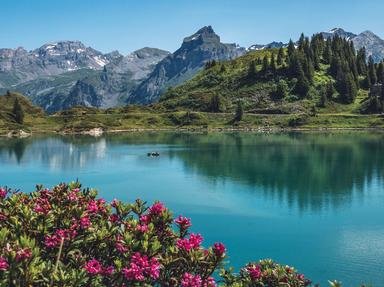Quiz Answer Key and Fun Facts
1. The national capital of which landlocked Central European country is located on the river Aar?
2. Which historic, "fair" city lies on both banks of the Adige, Italy's second-longest river?
3. One of Siberia's major rivers, the Angara, drains out of what large lake, the world's oldest and deepest?
4. Known as Oxus to the Greeks and Romans, the river Amu Darya flows into the remnants of the Aral Sea. These bodies of water are located in what part of the Old World?
5. Which of these A rivers forms the border between Russia and China, and also gives its name to subspecies of tiger and leopard?
6. Africa's seventh-largest lake, Lake Albert is shared by the Democratic Republic of Congo and what landlocked country in East Africa, once ruled by the notorious Idi Amin?
7. Athabasca is the name of a lake and one of the rivers that feed it. In which Canadian provinces or territories are these bodies of water located?
8. The US states of Alabama and Arkansas share their names with rivers. Which of these facts about these rivers is true?
9. Two polar bodies of water are named after great Norwegian explorer Roald Amundsen - the Amundsen Sea and the Amundsen Gulf. They are both arms of the Arctic Sea.
10. Which of these marginal seas is located in the Southern Hemisphere, between Australia and Western New Guinea?
Source: Author
LadyNym
This quiz was reviewed by FunTrivia editor
agony before going online.
Any errors found in FunTrivia content are routinely corrected through our feedback system.
